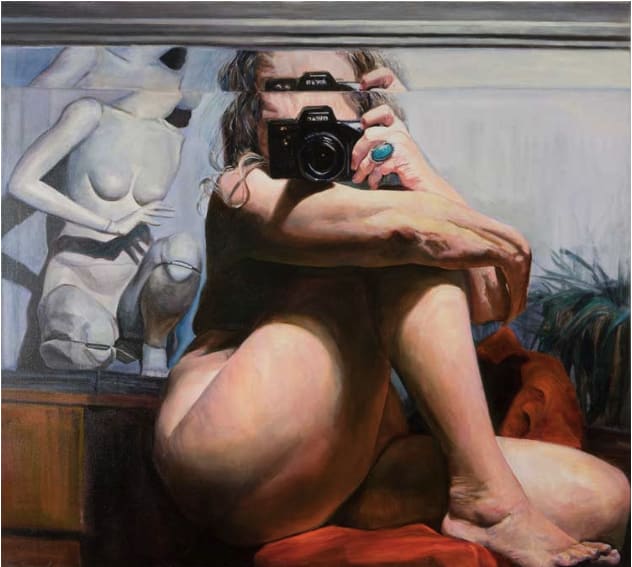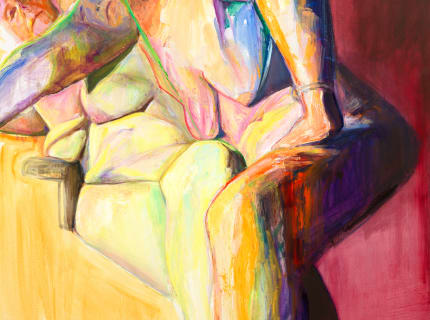From her abstract expressionist paintings in the 1970s, evolving into figurative work that confronts and subverts mainstream representations of the female body, Joan Semmel (b1932, New York) has produced a fascinating and defiant body of work over her lifetime. Now 89, her latest paintings continue to chart her self-reflective exploration of existing in a world that fetishises and distorts the female figure. Empowering, celebratory and inspiring, her work shifts the viewpoint and the conversation, speaking for herself and, in doing so, opening up the world for other women and especially artists to take control of their own perspectives, narratives and bodies.
With a retrospective, Skin in the Game, at the Pennsylvania Academy of the Fine Arts (PAFA) until April, which spans 60 years of Semmel’s paintings, and ahead of her presence this month at Frieze Los Angeles with Alexander Gray Associates, she talked to Studio International about her latest work.
Christiana Spens: To depict the ageing female body and one’s own experience and shifting perception of it seems to me the ultimate rebellion in a society obsessed with youth and specific appearances of young female bodies, and also to reveal the perversity of this norm. What are your views on the representation of ageing and older bodies in art today, and has anyone in particular inspired you to focus your attention on these issues and this aspect of your own experience?
Joan Semmel: I never started out with the idea of specialising in ageing bodies or using it as a theme. I merely was using my own body as model over the years and, of course, the usual metamorphosis was taking place. When I was doing the Locker Room Series, there were people of all sizes and shapes as well as age. I was simply not excluding those who did not conform to any preconceived notions of beauty. Of course, I realised that this was untrodden ground and was therefore glad to explore it with a fresh eye. I am not aware of others, except perhaps John Coplans, who worked with photos a little after my early self-images were being shown.
CS: Reclaiming the gaze of the female nude and, inherently, its sexuality is still clearly hugely important, despite some social progress and the attention given to more female painters than in the past. How does your work continue to respond to the mainstream media and porn-influenced treatment of the female figure?
JS: When I began to work with representations of the figure, there were not yet the formulations of the critical discourse such as “the male gaze”, but I was, of course, addressing precisely that cultural phenomenon by insisting on and prioritising my own point of view. That aspect of my work is self-evident at this time.
The pervasiveness of exploitative images and narratives of women continues to be instrumental in distorting people’s perceptions and aspirations. By using my own body without adjusting its imperfections to idealise or aestheticise it, I tried to undercut those distortions.
I continue to try to allow my work to respond to my own personal place in time and space and respond accordingly, trusting that the larger cultural issues will also be present in my art as they are in my life. Any art object in the end is about itself, regardless of the motivation or the rationalisation that triggered that response.
...
Read full interview at studiointernational.com.

